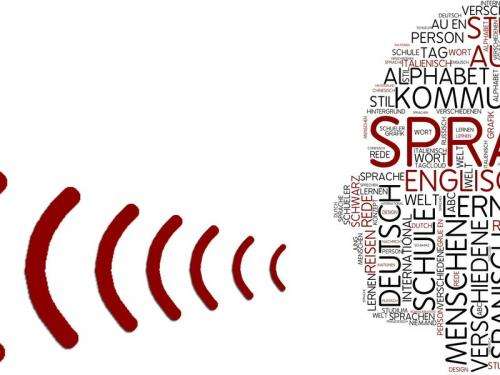The great orchestral work of speech

What goes on inside our heads is similar to an orchestra. For Peter Hagoort, Director at the Max Planck Institute for Psycholinguistics, this image is a very apt one for explaining how speech arises in the human brain. "There are different orchestra members and different instruments, all playing in time with each other, and sounding perfect together."
When we speak, we transform our thoughts into a linear sequence of sounds. When we understand language, exactly the opposite occurs: we deduce an interpretation from the speech sounds we hear. Closely connected regions of the brain – like the Broca's area and Wernicke's area – are involved in both processes, and these form the neurobiological basis of our capacity for language.
The 58-year-old scientist, who has had a strong interest in language and literature since his youth, has been searching for the neurobiological foundations of our communication since the 1990s. Using imaging processes, he observes the brain "in action" and tries to find out how this complex organ controls the way we speak and understand speech.
Making language visible
Hagoort is one of the first researchers to combine psychological theories with neuroscientific methods in his efforts to understand this complex interaction. Because this is not possible without the very latest technology, in 1999, Hagoort established the Nijmegen-based Donders Centre for Cognitive Neuroimaging where an interdisciplinary team of researchers uses state-of-the-art technology, for example MRI and PET scanners, to find out how the brain succeeds in combining functions like memory, speech, observation, attention, feelings and consciousness.
The Dutch scientist is particularly fascinated by the temporal sequence of speech. He discovered, for example, that the brain begins by collecting grammatical information about a word before it compiles information about its sound. This first reliable real-time measurement of speech production in the brain provided researchers with a basis for observing speakers in the act of speaking. They were then able to obtain new insights about why the complex orchestral work of language is impaired, for example, after strokes and in the case of disorders like dyslexia and autism.
"Language is an essential component of human culture, which distinguishes us from other species," says Hagoort. "Young children understand language before they even start to speak. They master complex grammatical structures before they can add 3 and 13. Our brain is tuned for language at a very early stage," stresses Hagoort, referring to research findings. The exact composition of the orchestra in our heads and the nature of the score on which the process of speech is based are topics which Hagoort continues to research.













